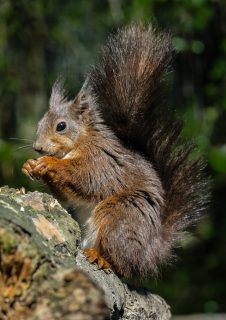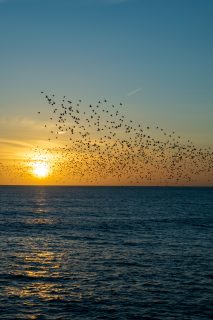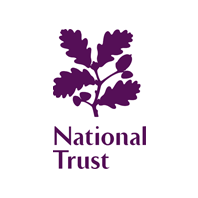Winter solstice
December marks midwinter, the winter solstice or hibernal solstice. This is the day with the shortest period of daylight and falls on the 21st day of the month.
This has been a significant time of year throughout history for many cultures. Going as far back as Neolithic times the solstice would have marked an important moment in the annual cycle, guiding activities such as mating of animals and sowing of crops. And the last feast before deep winter, where cattle would be slaughtered so they didn’t have to be fed over winter, and wine and beer made earlier in the year would be ready to drink.

For our waking wildlife every hour of daylight is spent looking for food at this time of year. Nuts fallen on the ground and berries left on the trees provide essential nutrients for our birds and mammals. Some species will store food for these harsher months, such as wood mice, jays and red squirrels, who will hide caches of food to use when there is little else available. Forgotten caches are a great way for trees to set seed. Jays are particularly important in spreading acorns from oak trees.
Some of our native wildlife survives this dark time of year with little food by hibernating. Hedgehogs, bats, dormice, and some insects, amphibians and reptiles all go into a deep slumber. A remarkable evolutionary feat that enables animals to lower their body temperature and heart rate and conserve energy when food is not available. Hibernation can last for days, weeks or months.

Deep winter is a great time of year to go wildlife watching. With the leaves off the trees it makes it easier to spot our native birds and winter visitors. With the ground wet and muddy you can easily spot the tracks of deer, fox and badger along the ground. One spectacle worth seeing is the starling murmurations on Bodmin Moor. These occur in winter when the birds roost together in large numbers. The reasons behind murmurations are thought to be do with predation, safety in numbers, and constant movement means no one bird is on the edge of the flock and at a higher risk of being predated for a prolonged period of time. Murmurations occur in the early evening before the birds land and roost for the night.
The best thing about the winter solstice is that it marks the turning point toward long summer days, as the days slowly lengthen, giving us something to look forward to and leaving the long, dark nights behind.

